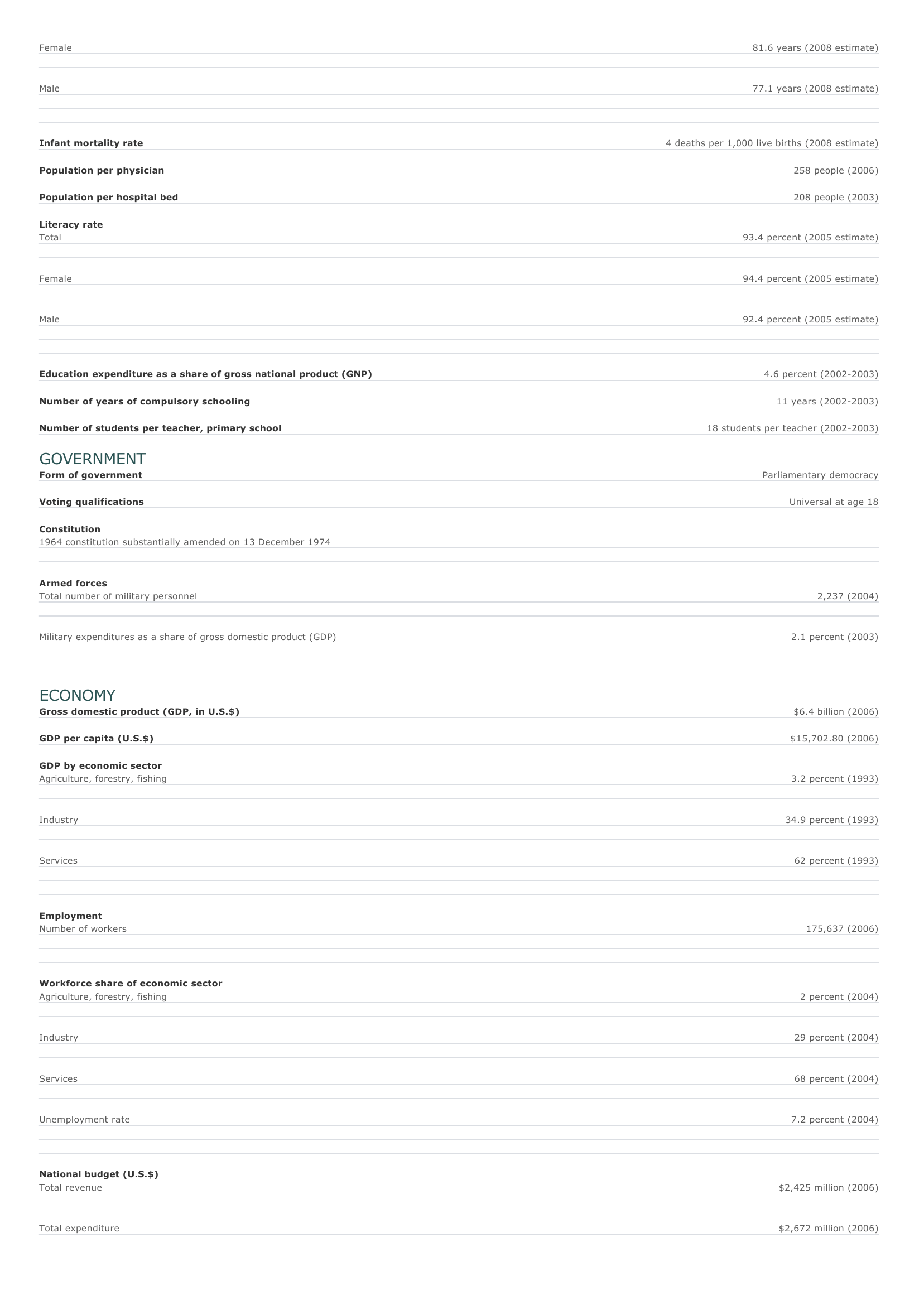
Malta Facts and Figures. BASIC FACTS Official name Capital Area Republic of Malta Valletta 316 sq km 122 sq mi PEOPLE Population 403,532 (2008 estimate) Population growth Population growth rate 0.41 percent (2008 estimate) Projected population in 2025 421,239 (2025 estimate) Projected population in 2050 395,639 (2050 estimate) Population density Urban/rural distribution Share urban Share rural 1,277 persons per sq km (2008 estimate) 3,307 persons per sq mi (2008 estimate) 92 percent (2005 estimate) 8 percent (2005 estimate) Largest cities, with population Birkirkara 22,435 (2004 estimate) Qormi 18,547 (2004 estimate) Mosta 18,070 (2004 estimate) ? abbar 15,134 (2004 estimate) Rabat 12,877 (1997 estimate) Ethnic groups Maltese 96 percent British 2 percent Other (including Sicilian, French, Spanish, and Italian) 2 percent Languages Maltese (official), English (official), Italian Religious affiliations Roman Catholic 95 percent Nonreligious 1 percent O ther 4 percent HEALTH AND EDUCATION Life expectancy Total 79.3 years (2008 estimate) Female 81.6 years (2008 estimate) Male 77.1 years (2008 estimate) Infant mortality rate 4 deaths per 1,000 live births (2008 estimate) Population per physician 258 people (2006) Population per hospital bed 208 people (2003) Literacy rate Total 93.4 percent (2005 estimate) Female 94.4 percent (2005 estimate) Male 92.4 percent (2005 estimate) Education expenditure as a share of gross national product (GNP) Number of years of compulsory schooling Number of students per teacher, primary school 4.6 percent (2002-2003) 11 years (2002-2003) 18 students per teacher (2002-2003) GOVERNMENT Form of government Parliamentary democracy Voting qualifications Universal at age 18 Constitution 1964 constitution substantially amended on 13 December 1974 Armed forces Total number of military personnel Military expenditures as a share of gross domestic product (GDP) 2,237 (2004) 2.1 percent (2003) ECONOMY Gross domestic product (GDP, in U.S.$) GDP per capita (U.S.$) $6.4 billion (2006) $15,702.80 (2006) GDP by economic sector Agriculture, forestry, fishing 3.2 percent (1993) I ndustry 34.9 percent (1993) Services 62 percent (1993) Employment Number of workers Workforce share of economic sector Agriculture, forestry, fishing 175,637 (2006) 2 percent (2004) I ndustry 29 percent (2004) Services 68 percent (2004) Unemployment rate 7.2 percent (2004) National budget (U.S.$) Total revenue $2,425 million (2006) Total expenditure $2,672 million (2006) Monetary unit 1 euro (EUR), consisting of 100 cents Major trade partners for exports United States, Germany, Singapore, France, and United Kingdom Major trade partners for imports Italy, France, Singapore, Japan, and United Kingdom ENERGY, COMMUNICATIONS, AND TRANSPORTATION Electricity production Electricity from thermal sources 100 percent (2003 estimate) Electricity from hydroelectric sources 0 percent (2003 estimate) Electricity from nuclear sources 0 percent (2003 estimate) Electricity from geothermal, solar, and wind sources 0 percent (2003 estimate) Number of radios per 1,000 people 669 (1997) Number of telephones per 1,000 people 501 (2005) Number of televisions per 1,000 people 568 (2000 estimate) Number of Internet hosts per 10,000 people 178 (2003) Daily newspaper circulation per 1,000 people 130 (1996) Number of motor vehicles per 1,000 people 636 (2004) Paved road as a share of total roads 88 percent (2004) SOURCES Basic Facts and People sections Area data are from the statistical bureaus of individual countries. Population, population growth rate, and population projections are from the United States Census Bureau, International Programs Center, International Data Base (IDB) (www.census.gov). Urban and rural population data are from the Food and Agriculture Organization (FAO) of the United Nations (UN), FAOSTAT database (www.fao.org). Largest cities population data and political divisions data are from the statistical bureaus of individual countries. Ethnic divisions and religion data are largely from the latest Central Intelligence Agency (CIA) World Factbook and from various country censuses and reports. Language data are largely from the Ethnologue, Languages of the World, Summer Institute of Linguistics International (www.sil.org). Health and Education section Life expectancy and infant mortality data are from the United States Census Bureau, International Programs Center, International database (IDB) (www.census.gov). Population per physician and population per hospital bed data are from the World Health Organization (WHO) (www.who.int). Education data are from the United Nations Educational, Scientific and Cultural Organization (UNESCO) database (www.unesco.org). Government section Government, independence, legislature, constitution, highest court, and voting qualifications data are largely from various government Web sites, the latest Europa World Yearbook, and the latest Central Intelligence Agency (CIA) World Factbook. The armed forces data is from Military Balance. Economy section Gross domestic product (GDP), GDP per capita, GDP by economic sectors, employment, and national budget data are from the World Bank database (www.worldbank.org). Monetary unit, agriculture, mining, manufacturing, exports, imports, and major trade partner information is from the statistical bureaus of individual countries, latest Europa World Yearbook, and various United Nations and International Monetary Fund (IMF) publications. Energy, Communication, and Transportation section Electricity information is from the Energy Information Administration (EIA) database (www.eia.doe.gov). Radio, telephone, television, and newspaper information is from the United Nations Educational, Scientific and Cultural Organization (UNESCO) database (www.unesco.org). Internet hosts, motor vehicles, and road data are from the World Bank database (www.worldbank.org). Note Figures may not total 100 percent due to rounding. Microsoft ® Encarta ® 2009. © 1993-2008 Microsoft Corporation. All rights reserved.










